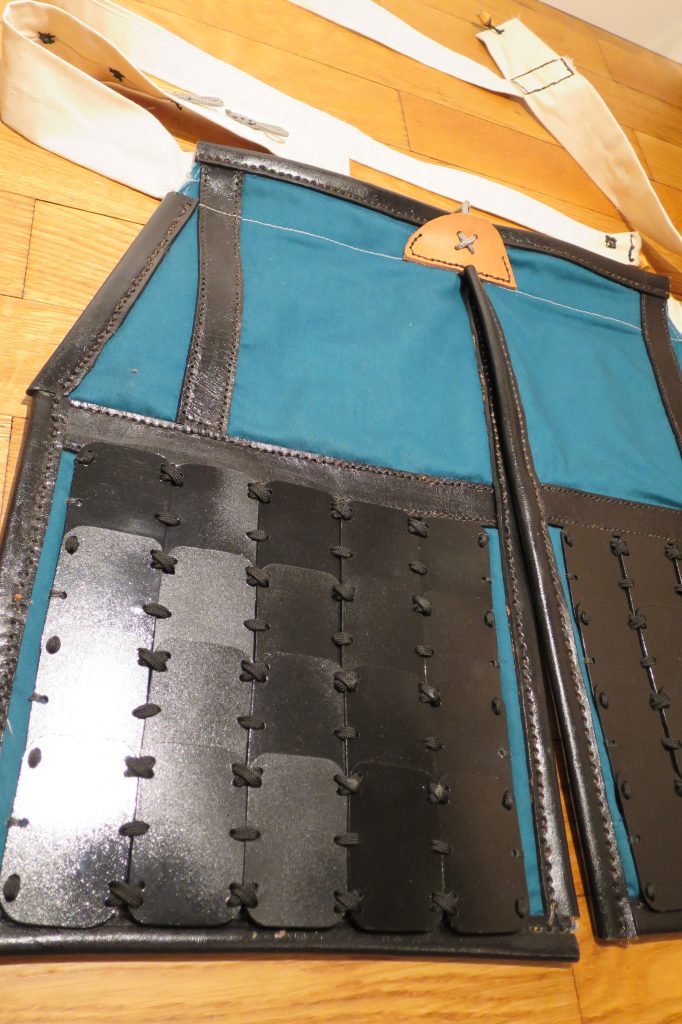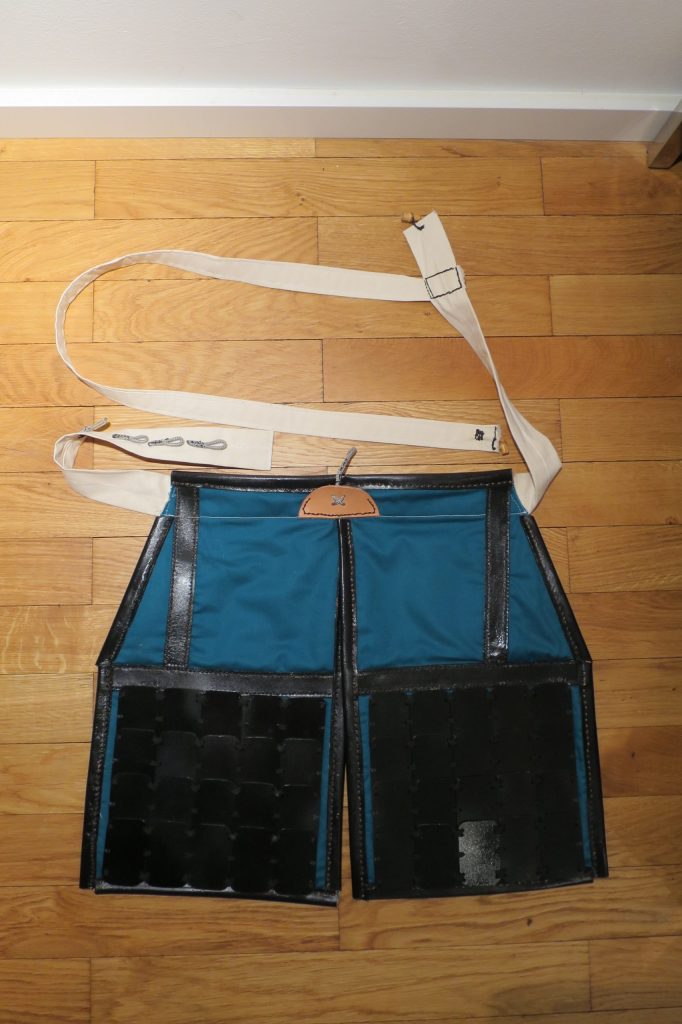The Thigh armour follows historical early medieval Japanese samurai armour design, in function and form.
It is carried like an apron. It is tied together in the back and is supported by one suspender, which runs diagonally over the shoulder.
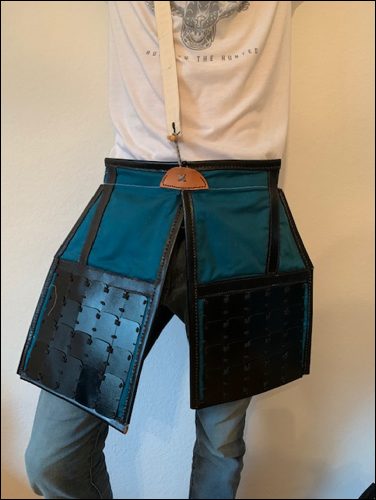
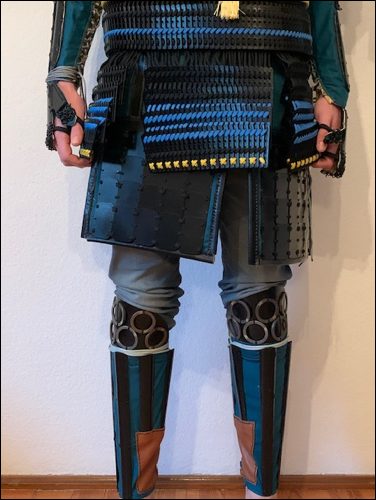
For this part of the armour, I made the thermoelastic plates, myself.
We will need
- Transparent paper
- Linen fabric
- Cotton fabric
- Scissors, pen
- Needle, threat, sewing machine
- Leather
- Leather paint
- Cotton fabric belt
- Toggle buttons
- Paracord
- Kydex plate
- Coping saw
- Emery Paper and grinder
- Drill
- Primer
- Paint
- Gloves
- and more…
Fabric work for the thigh armour (Haidate)
First, we design a sewing pattern on transparent paper. Take the measure from waistline to knee for the length. Take the approximate widths of your larger thigh, add about >20% on top for the final width of the haidate.
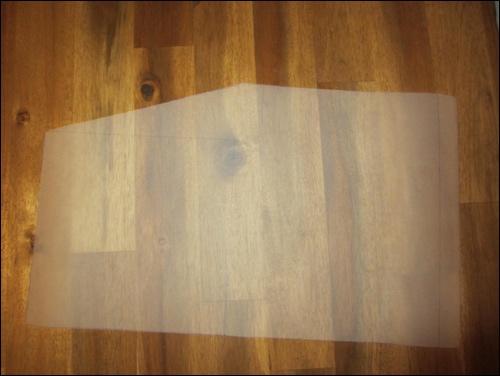
Use the sewing pattern for now cutting your linnen and cotton fabric into shape. If you are familiar with sewing, you know you will have to cut all a little larger so that you can sew it together and hide the got over on the inside.
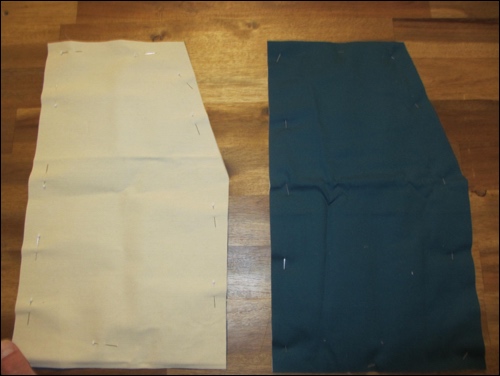
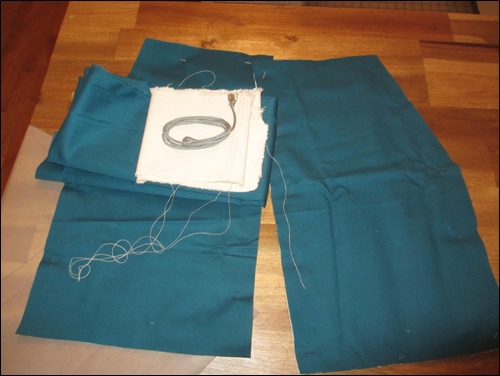
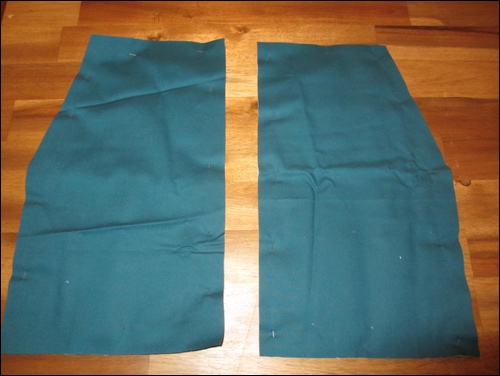
Leather work and leather applications for the thigh armour (haidate) in ancient Japanese samurai japan armory
The haidate must be pretty robust, since the fabric need to carry quiet some heavy plates. Since it was originally carried on horseback, it was warn off, easily. To make it durable, the haidate gets leather edges.
Therefore, I cut leather stripes in shape, watered them for making them flexible and bendable. I bended and dried the stripes, then cleaned the edges with a sharp knife and then painted the pieces black.
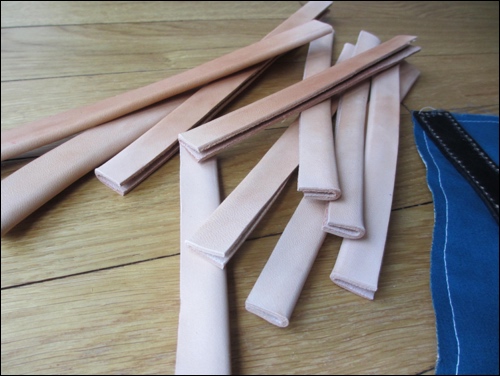
Four additional, straight leather applications go on top of the fabric. They will help carrying the weight of the plates.
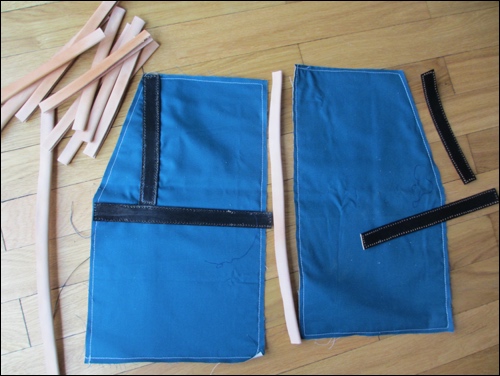
Now it is about sewing the leather on – and most important, both parts of the haidate are also sewed together, but only for a little part on the top.
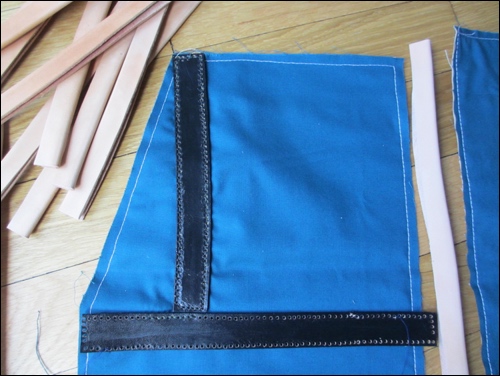
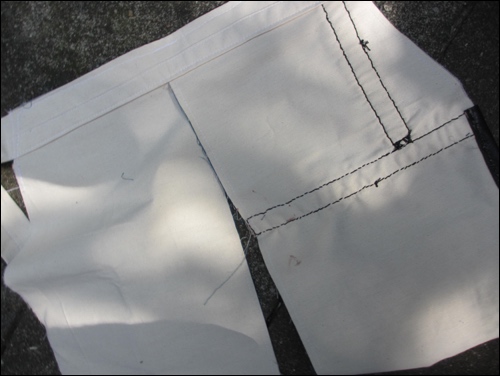
The leather stripes are now sewed above the edges of the fabric.
The apron now needs a belt. I made this out of the linen and sewed it to the haidate. This belt holds the apron to the waist.
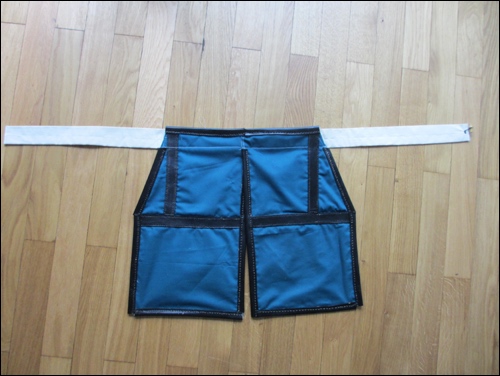
A toggle button goes to one end of the belt.
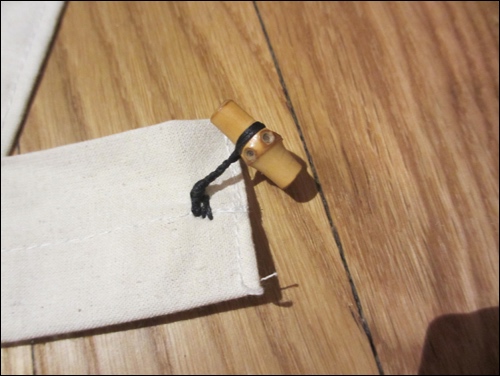
I sewed three loops to the other side of the belt. They may take the toggle button.
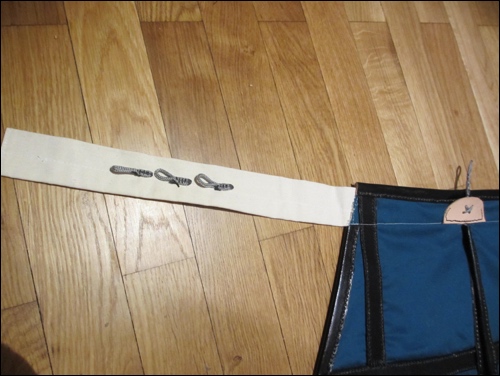
In addition to the belt, the apron is hold by a suspension. This runs diagonally over the shoulder and is fixt amidst the haidate in front and on the belt in the back. This suspension carries most of the weight of the thigh armour. In order to fix it to the haidate well, I added another leather application with a loop added to it. This loop take the toggle button of the suspender.

The suspenders toggle button will go into this loop.
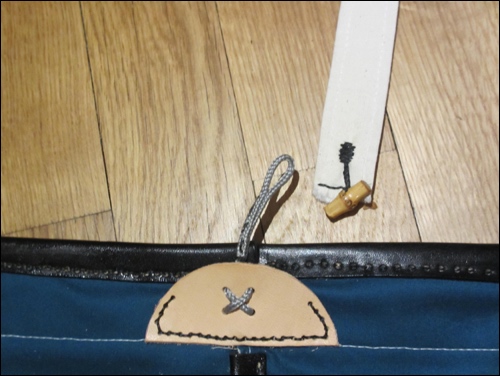
From here, the suspender runs diagonally over the shoulder and ends up on the waist belt.
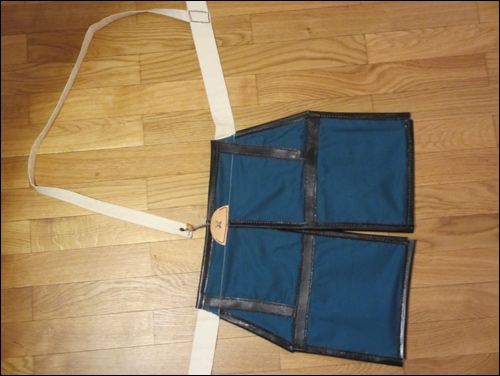
Lamellar style plates on a samurai thigh armour (Haidate) DIY
The armour / the protecting plates will be sewed right onto the fabric. They will protect the thigh from being hit by a sword. Therefore, we design custom plates so that they fit the size of the haidate perfectly well.
To do so, we first design patterns in paper.
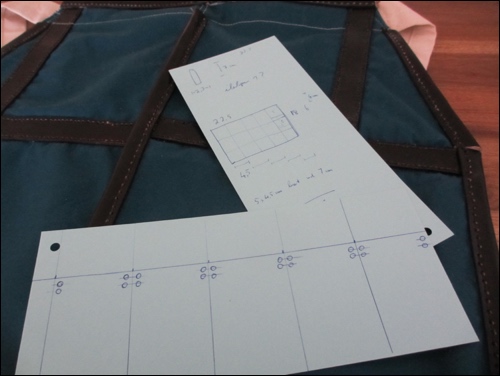
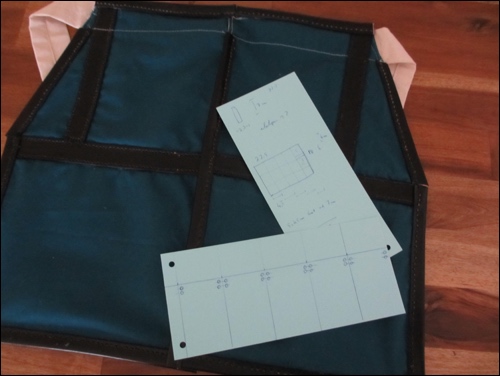
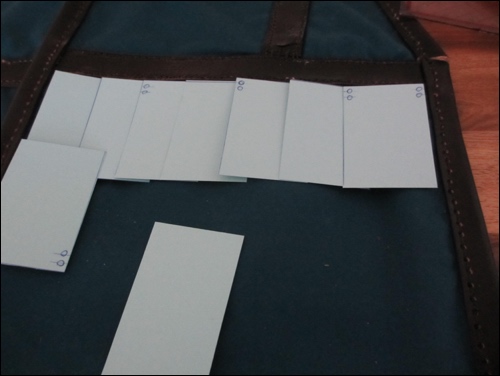
As soon as the design is clear, we cut the plates out of a kydex sheet.
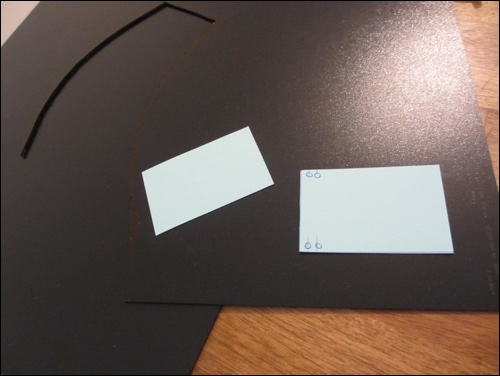
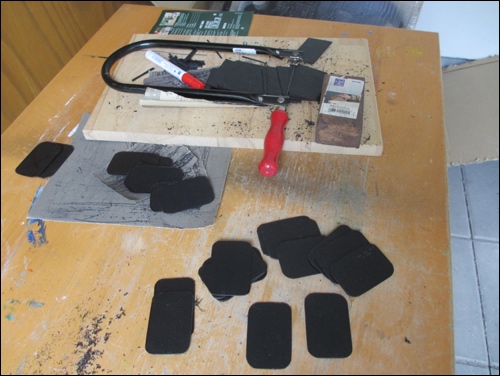
It is recommended to try out the final design before finalising the plates.
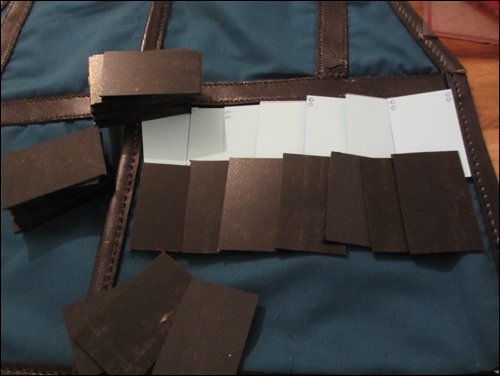
As soon as we are sure about size and design of the plates, we can grind them in shape.
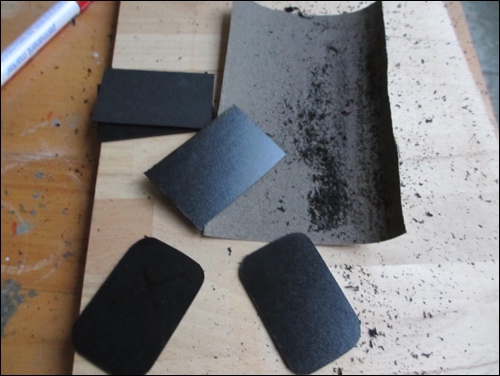
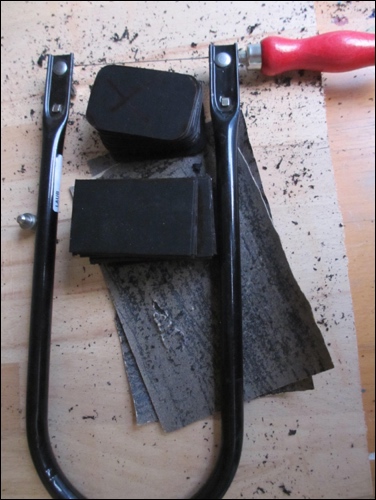
Now, the plates need to be drilled. In order to reproduce the holes identically on each plate, I use a paper template.
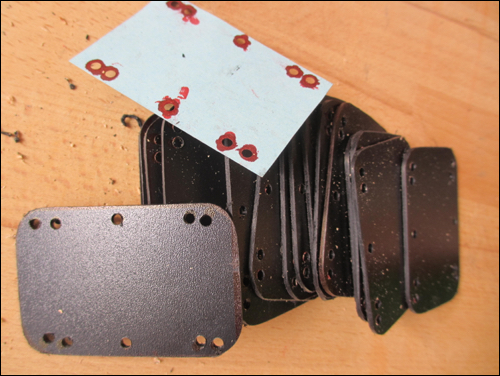
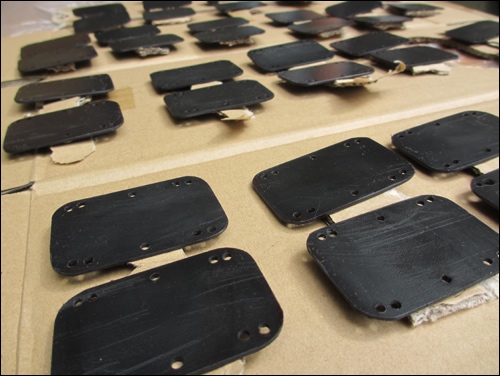
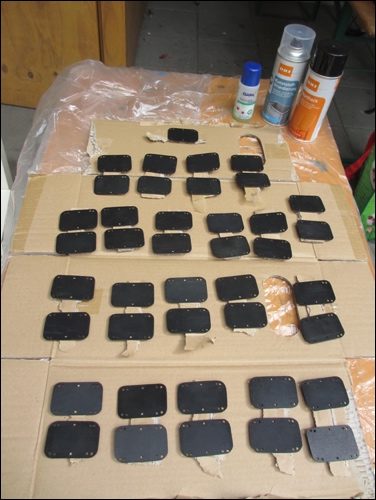
For my haidate, I decided to go for three rows of five plates for each side of the apron. I did not make them overlap.
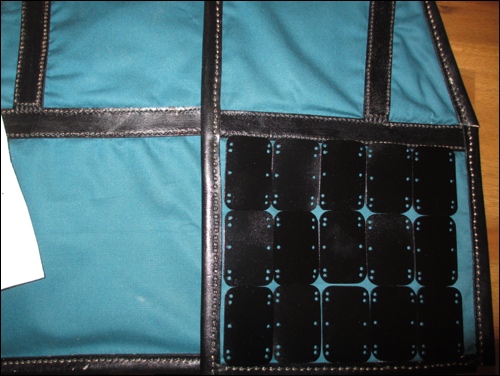
Therfore, I first laced all plates together and then applied them to the fabric.
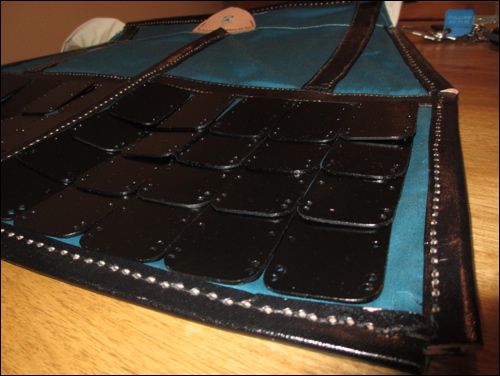
Haidate – thigh armour of an ancient samurai armour
I made the plates overlap. Since I assumed that a strike would would likely cut upwards, I made the plats overlap as can be seen in the picture below.
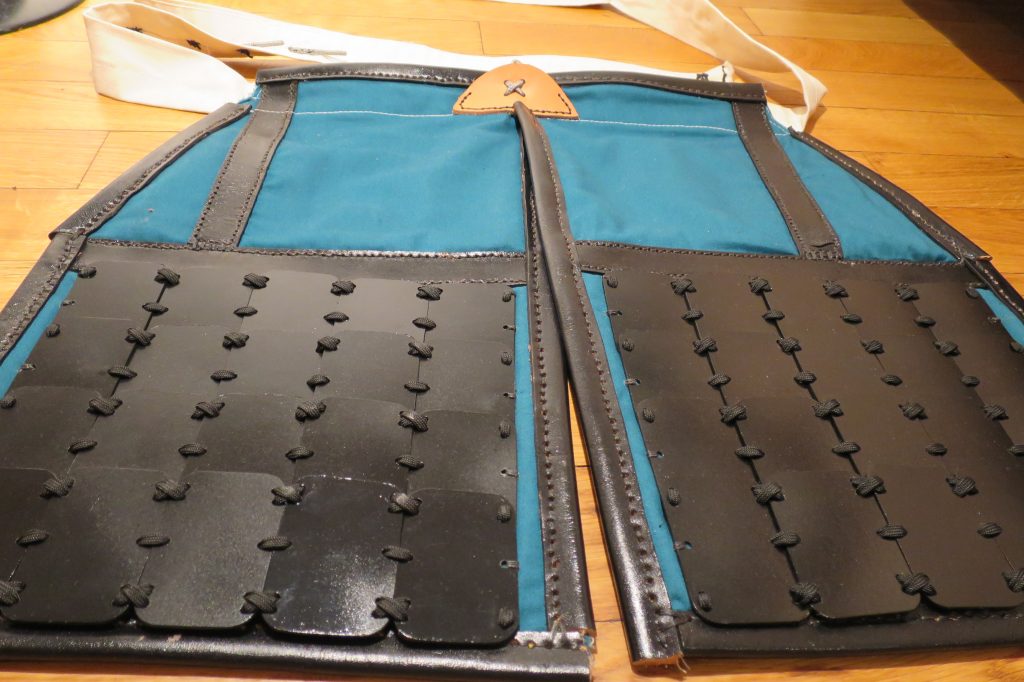
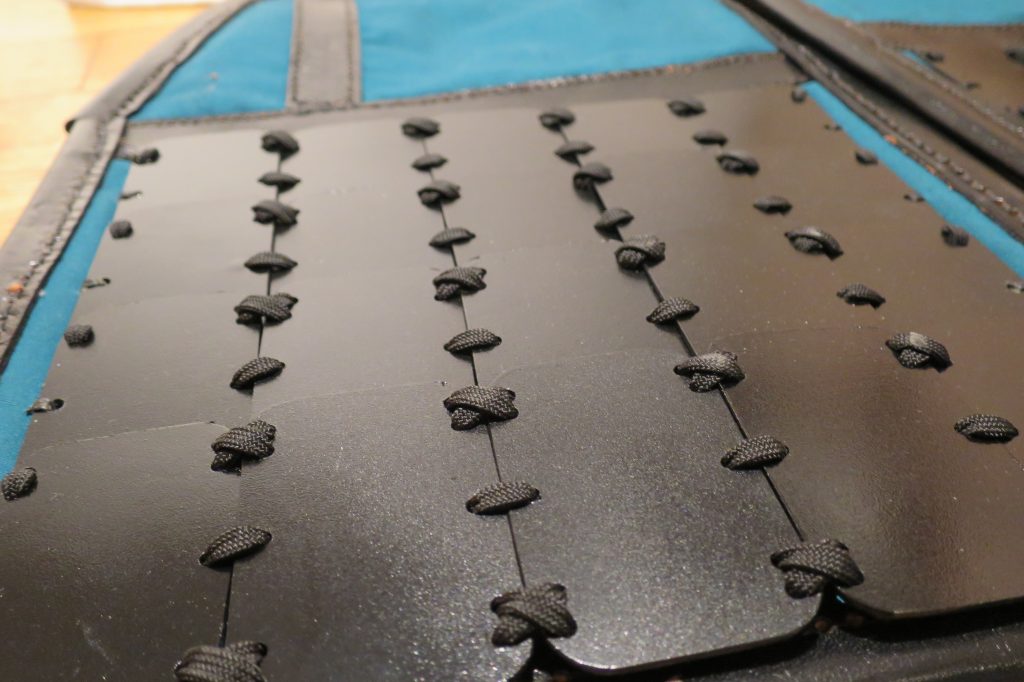
Now, the haidate (Thigh Armour), which is worn as an apron, is ready.
